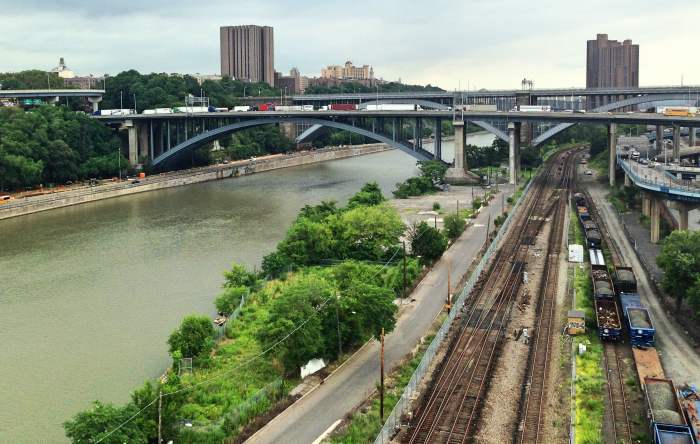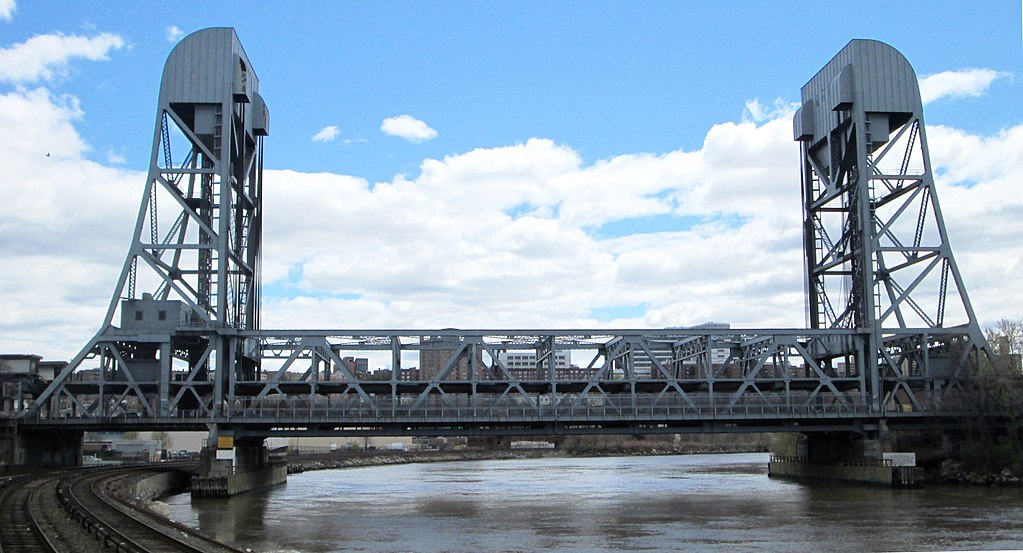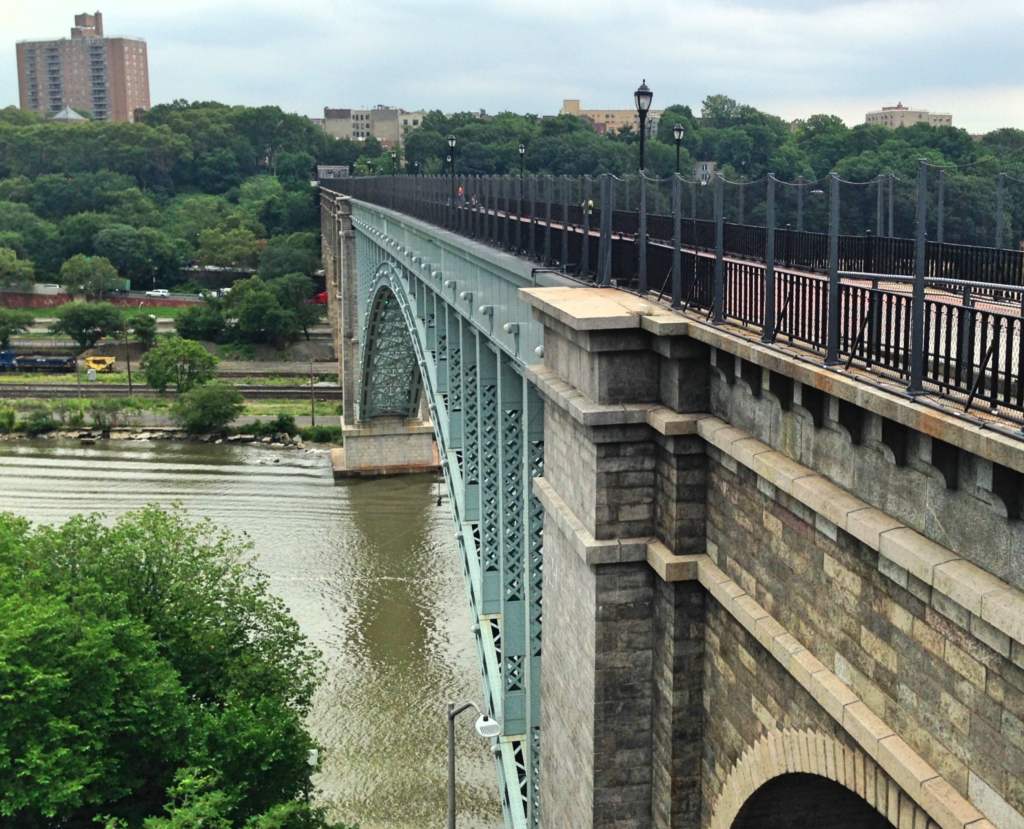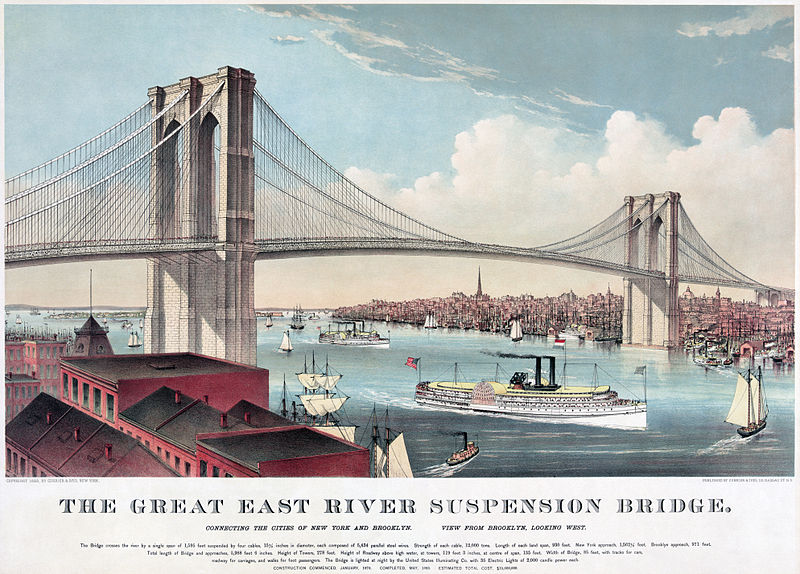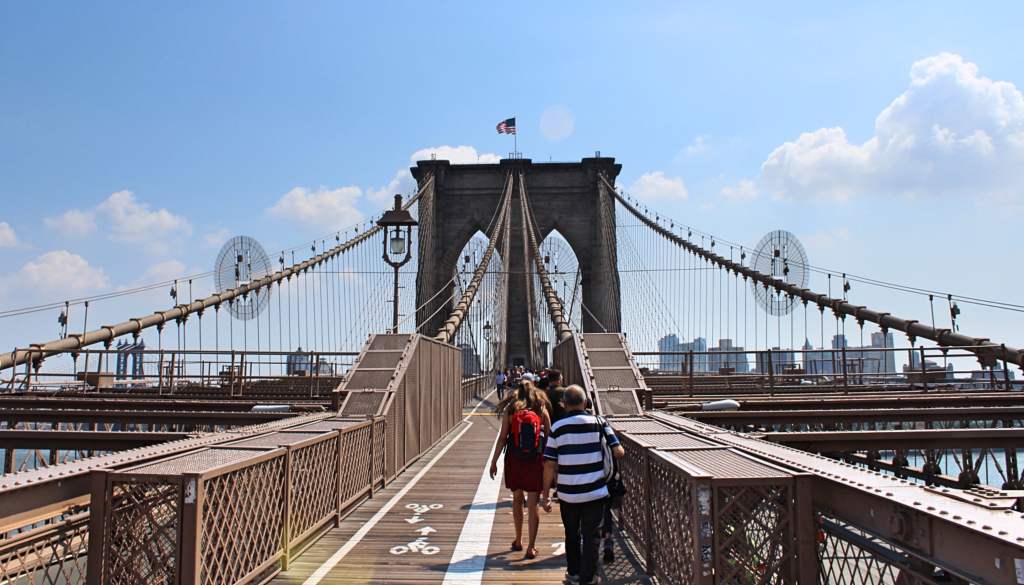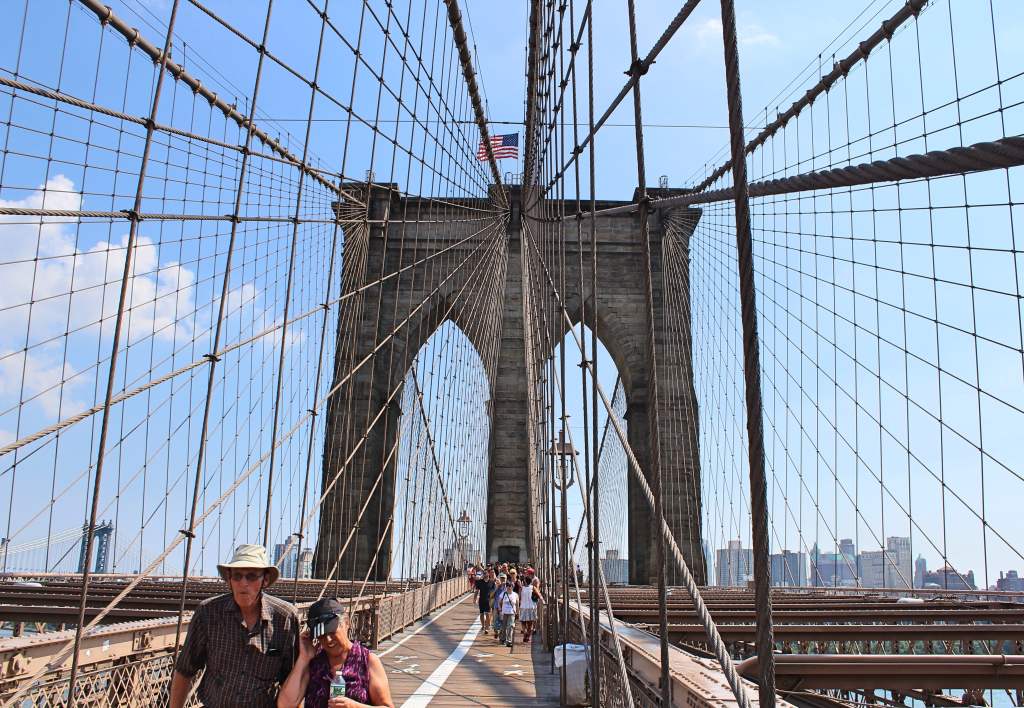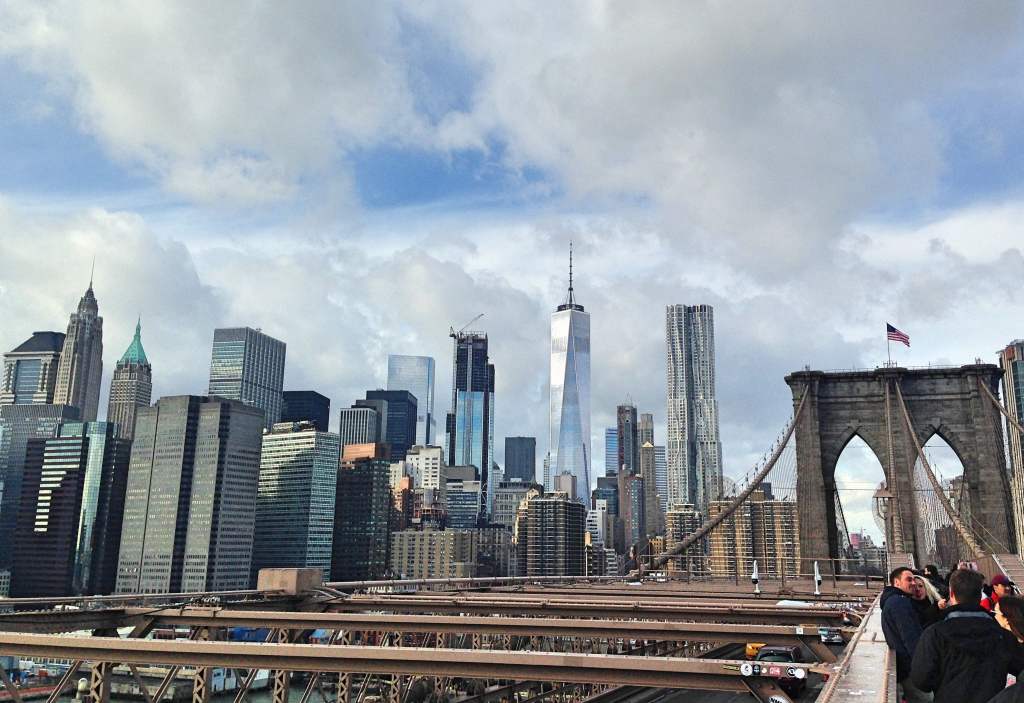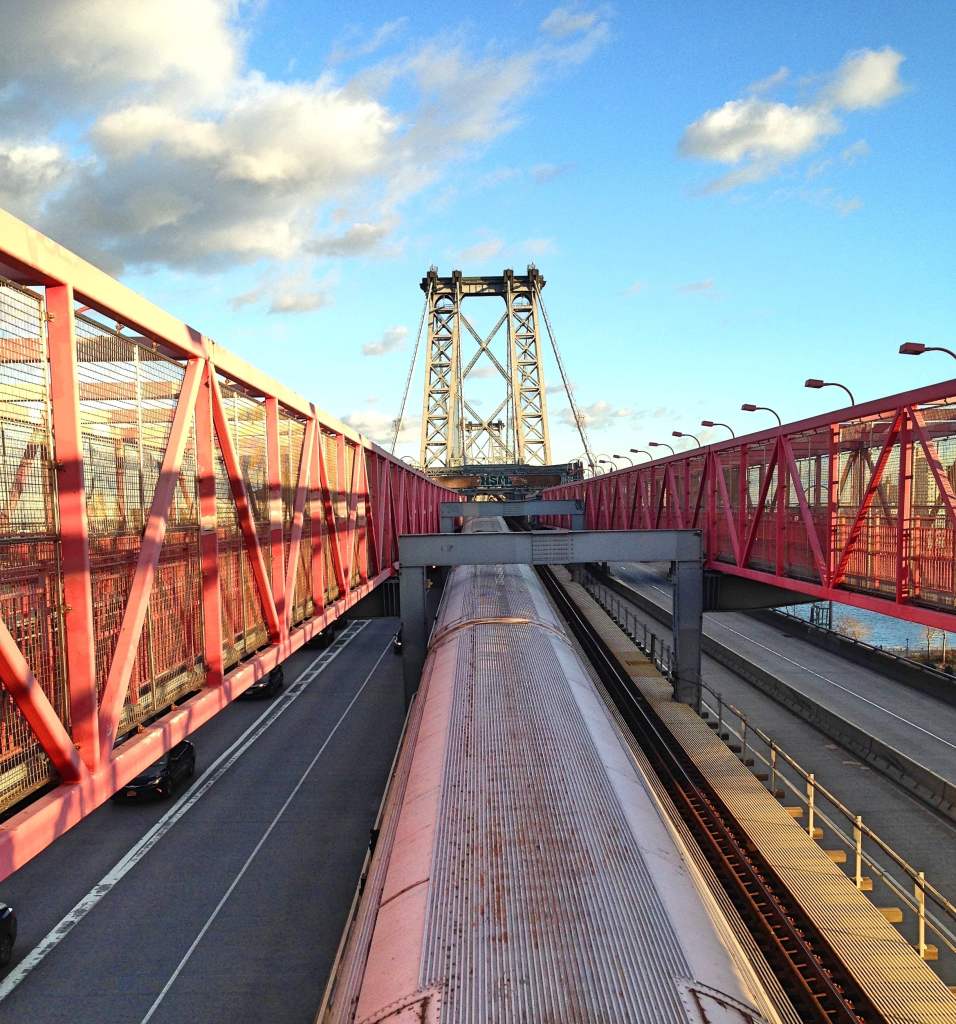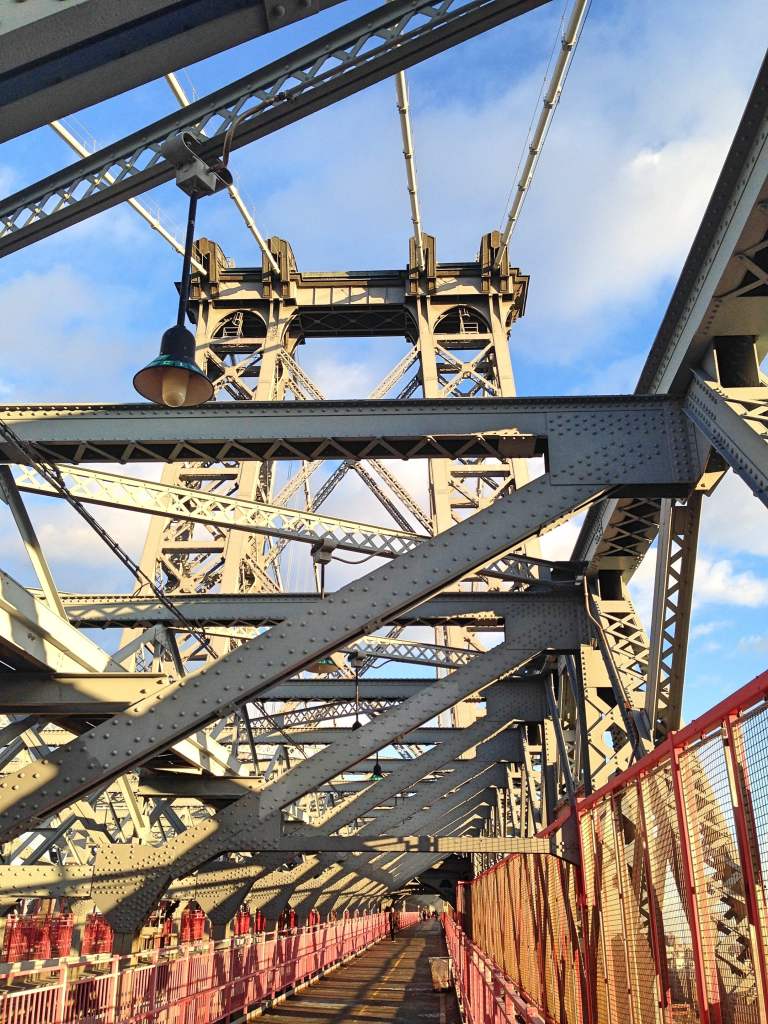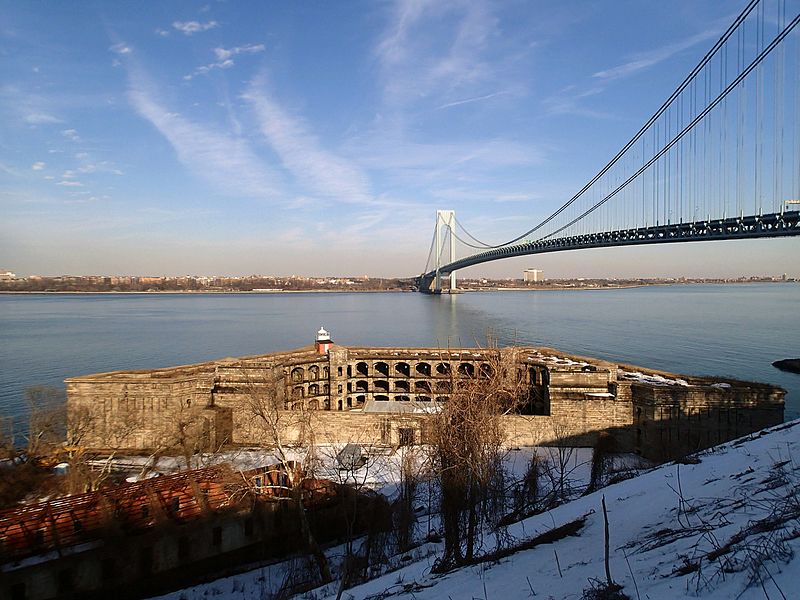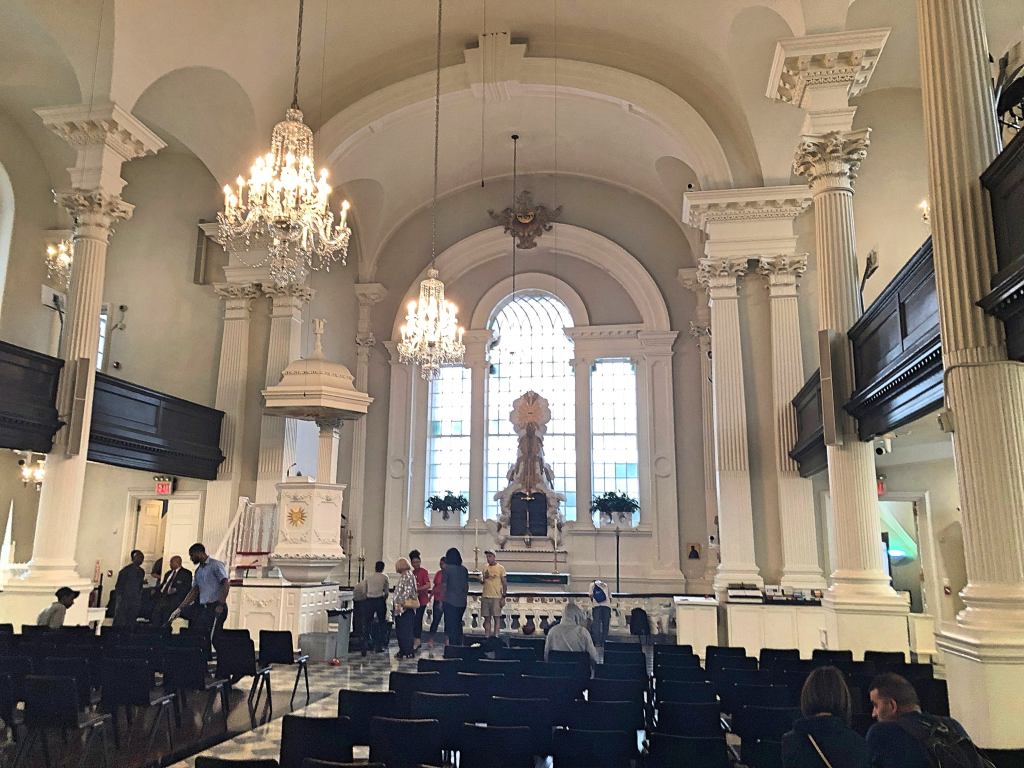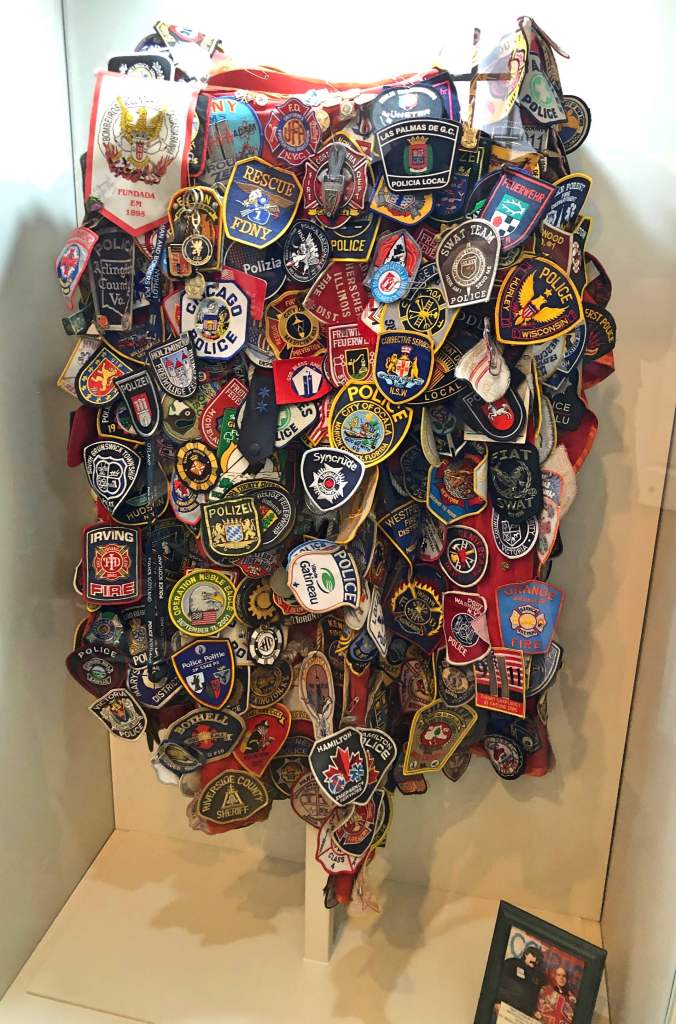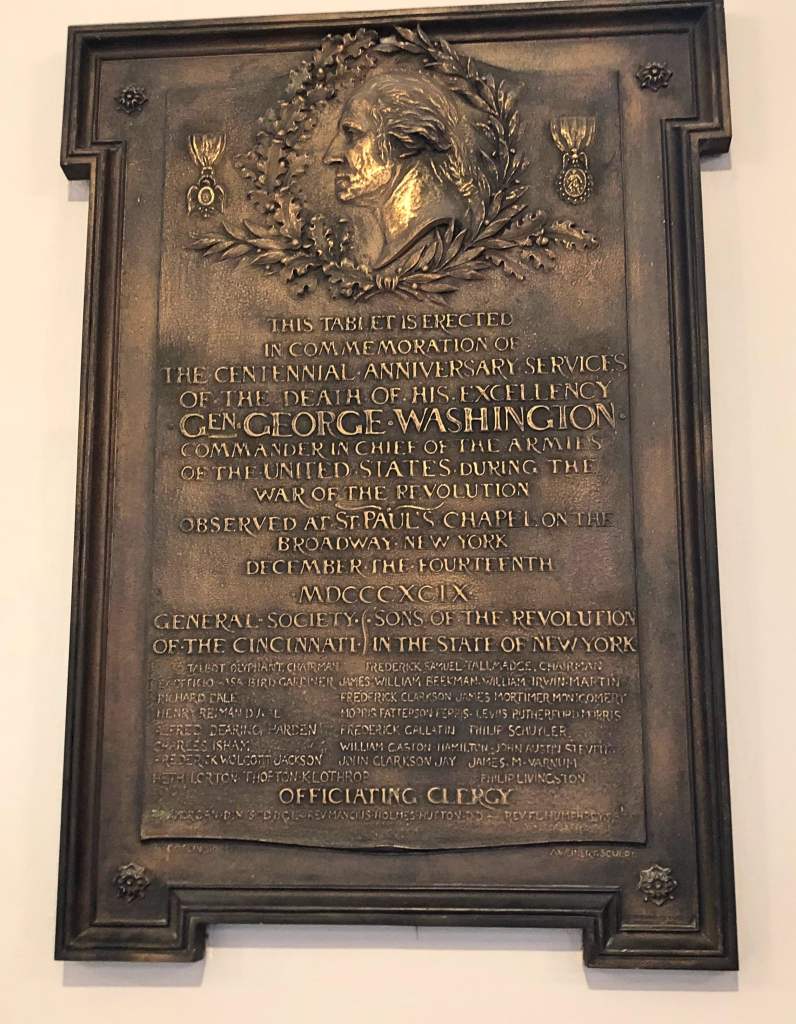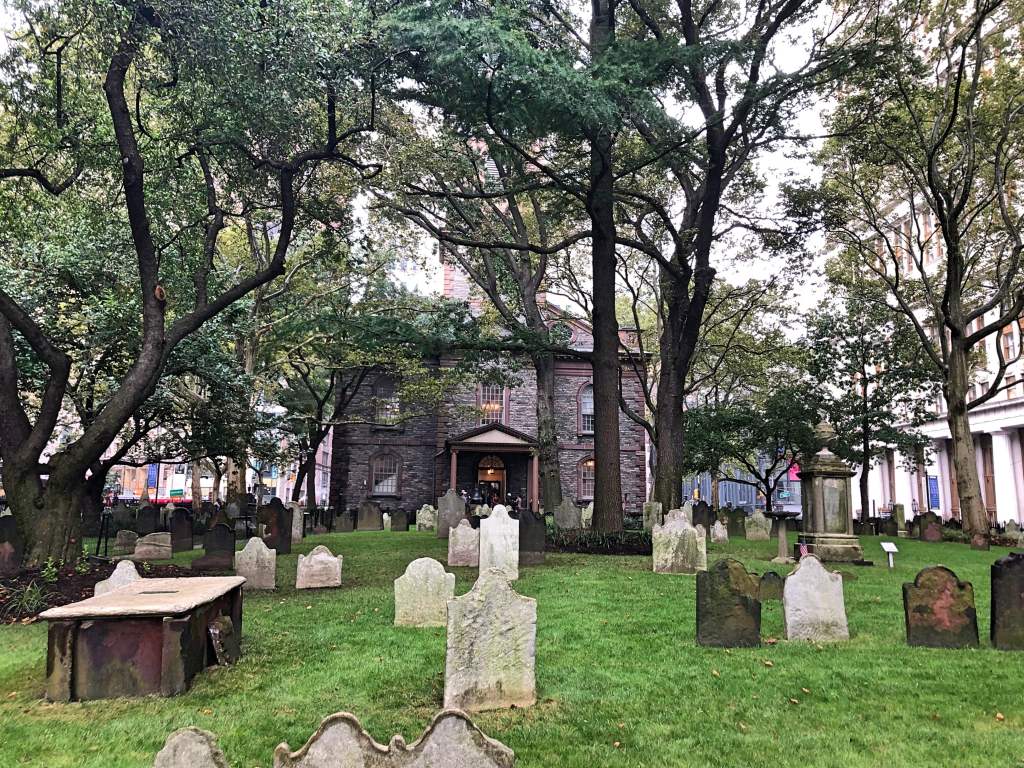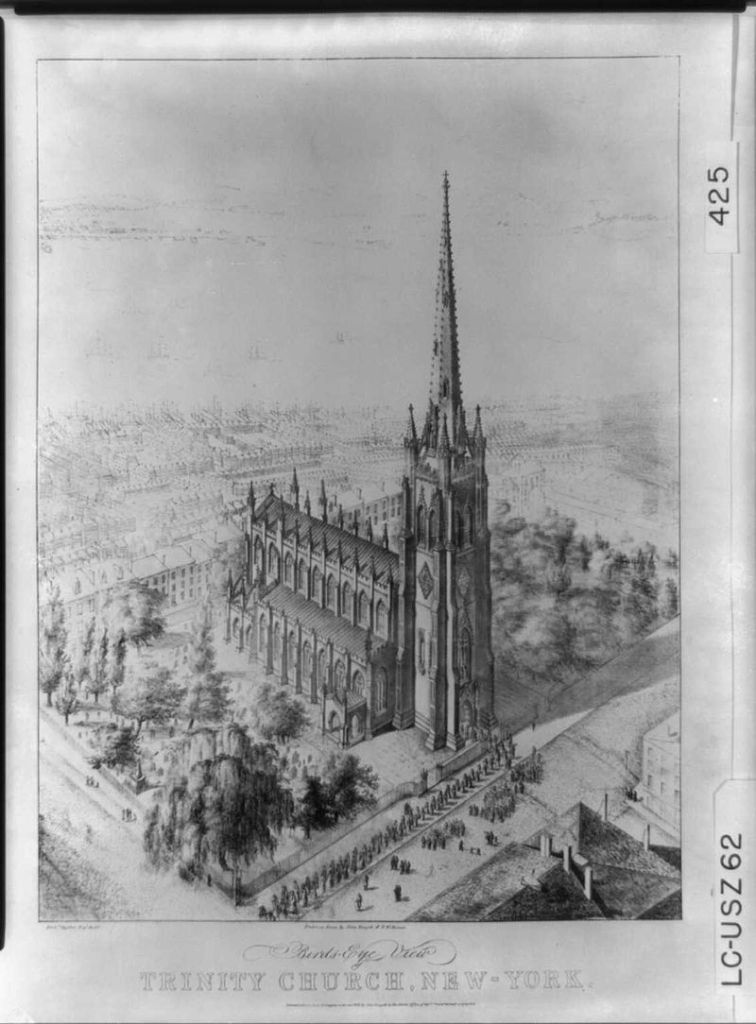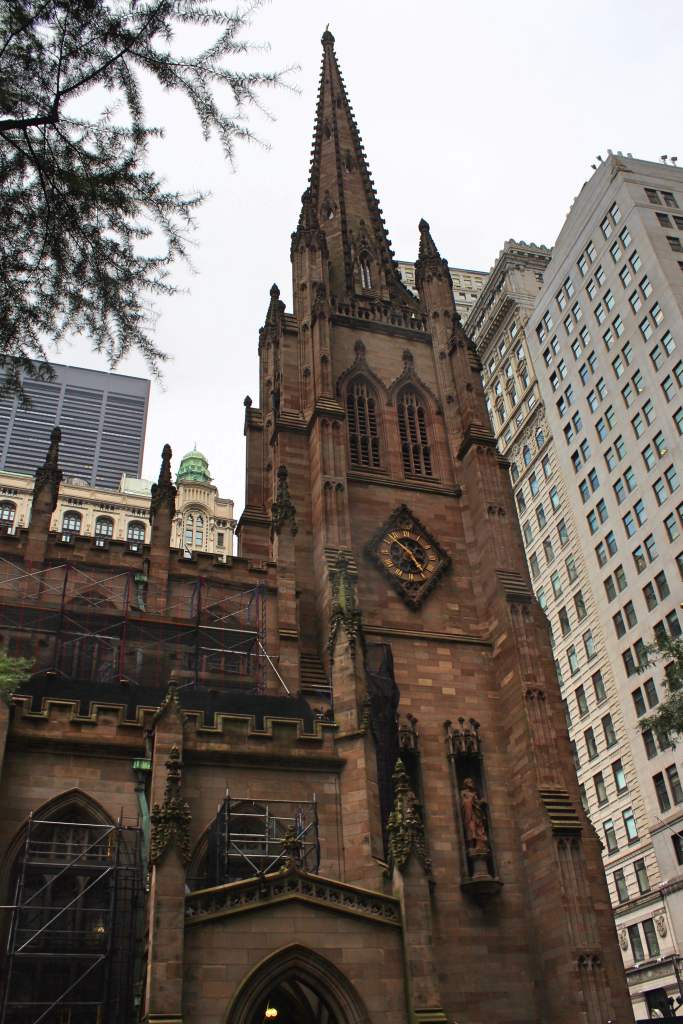This post is part of my series on Historic Hudson Homes:
- Washington Irving’s Sunnyside
- John D. Rockefeller’s Kykuit
- Alexander Hamilton’s Grange
I stumbled upon the Alexander Hamilton’s house completely by accident. I met a couple of friends from out of town, and in the process of exploring the Upper West Side we came upon it.
The discovery that one of the Founding Fathers’ houses was here, in Harlem, was astounding. The humble wooden house could hardly look more out of place nowadays. Set amidst the landscape of glass, steel, and concrete, the Federal style building looks as if it has been plopped down from another age. And in a way it was. The house has been moved from its original location not once, but twice.
When Hamilton had the house built, in the early 1800s, he was already in the twilight of his career. He had finished his epochal tenure as the Secretary of the Treasury—during which he constructed the nation’s financial system from the ground up—and had been reduced by a series of quarrels and scandals to an ordinary private citizen. To name just two watersheds in his life, he was publically exposed (and exposed himself) as an adulterer, and he also openly quarelled with John Adams, the presidential candidate of his political party, the Federalists. He was a brilliant statesman but a poor politician.
After this semi-voluntary retirement from the life of politics, Hamilton worked as a high-profile lawyer in New York City. Brilliant in everything he did, his career in law was no exception. To escape from the bustle of the city, Hamilton hired John McComb Jr.—the architect who designed NYC’s majestic City Hall, among other things—to build a rustic retreat for himself and his large family (he had eight children). At the time, Harlem was of course nothing like the city it is today. The area was still mostly farms and undeveloped woodland, an ideal spot to build a country house.
Hamilton did not have much time to enjoy his little paradise, however. Just two years after it was completed in 1802, Hamilton was killed in a duel with Vice-President Aaron Burr—another high-profile NYC lawyer, and a long-time rival of Hamilton’s. The property stayed in the family for some decades hence, occupied by his long-surviving wife Elizabeth and their children. But eventually it was sold and, by the late 1800s, it was in foreclosure and doomed to destruction. The building only survived because of the intervention of the St. Luke’s Episcopal Church, which bought the house and had it relocated, to conform with the Manhattan street grid.
This purchase was not for purely disinterested historical reasons, however. The church modified the house so that it could be used for services—a purpose which it served for many years. Eventually a larger church building was constructed, enclosing the old home. Then, in the 1920s, a historical preservation society intervened, buying the property and partially restoring some of its original features and decoration. It was only in the 1960s that it was designated a National Historic Landmark. But it remained hemmed in by the many tall buildings that sprung up around it.
Finally, in 2006, the house was moved to a more open location, in St. Nicholas Park, which was still within Hamilton’s original property. The move was a minor feat of technical achievement, gently cradling the entire structure and shifting it, inch by inch, to its new home. Now it stands in a relatively open space, near a few churches, some brownstown apartments, a playground, a taxi service, and a funeral home. And this curious conjunction of the historical, the mundane, the holy, the profitable, and everything else, is what New York City is all about.
For anyone who has visited Jefferson’s Monticello or Washington’s Mount Vernon, Hamilton’s little home may be something of a let down. Hamilton was never greatly wealthy in life; he owned no slaves—indeed, was part of the Abolition Society—and, though addicted to work, was scrupulously honest in his personal finances. In any case, much of the house’s original furnishings and character were lost in its two moves and its many renovations.
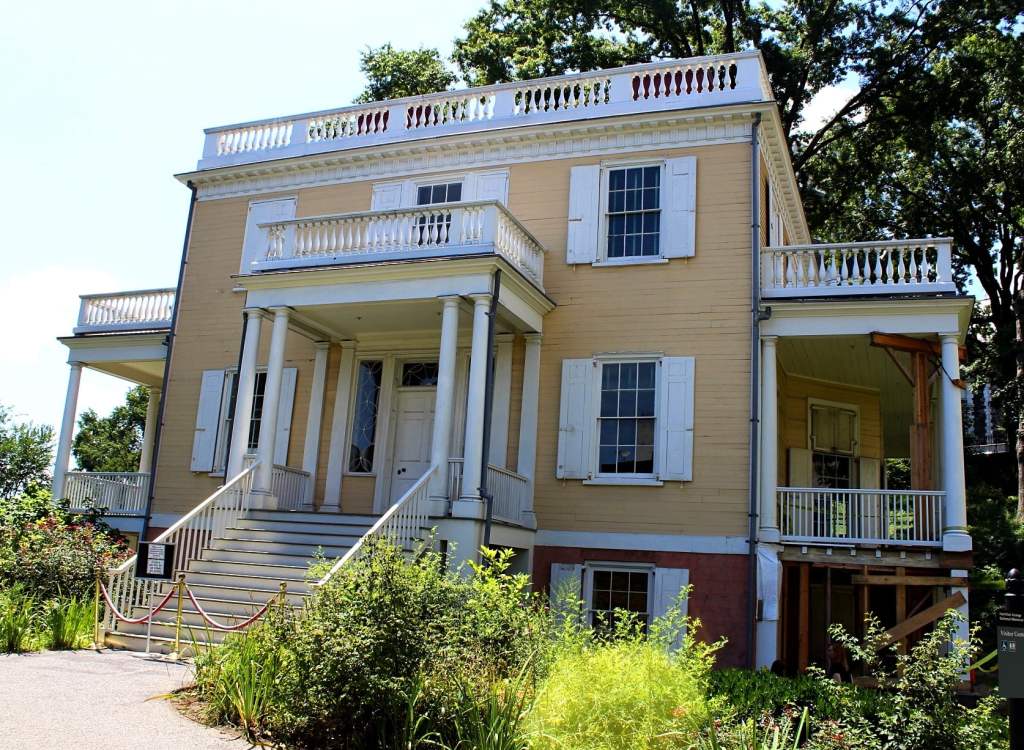
The visitor enters on the ground floor, what used to be the basement. There is a small gift shop near the entrance, with books by and about Hamilton. The rest of the space is a miniature museum. There is a time-lapse video of the epochal re-location of the house, and a short documentary that plays on a loop, giving an overview of Hamilton’s life. His accomplishments are also displayed in a series of informational panels and timelines. My favorite object on display was a mourning scarf—a scarf made and sold on the occasion of his untimely death, for people to honor his life. Amusingly, the scarf gives an incorrect account of Hamilton’s background, saying that he was “descended by his father of respectable Scottish ancestry, by his mother was reputably connected to New York.”

The reality, as you may know, was very different. Hamilton’s father, James, was a complete failure in life, and abandoned Hamilton and his brother when they were very young. (James may not even have been Hamilton’s real father, anyway, as Chernow speculates.) Further, Hamilton’s mother was far from reputable—she abandoned her husband and had Hamilton out of wedlock—and, in any case, died when Alexander was very young, leaving him little in the way of property or connections. Hamilton was, in other words, both a bastard and an orphan, as his musical proudly proclaims. But I suppose it is not polite to mention that at a funeral.
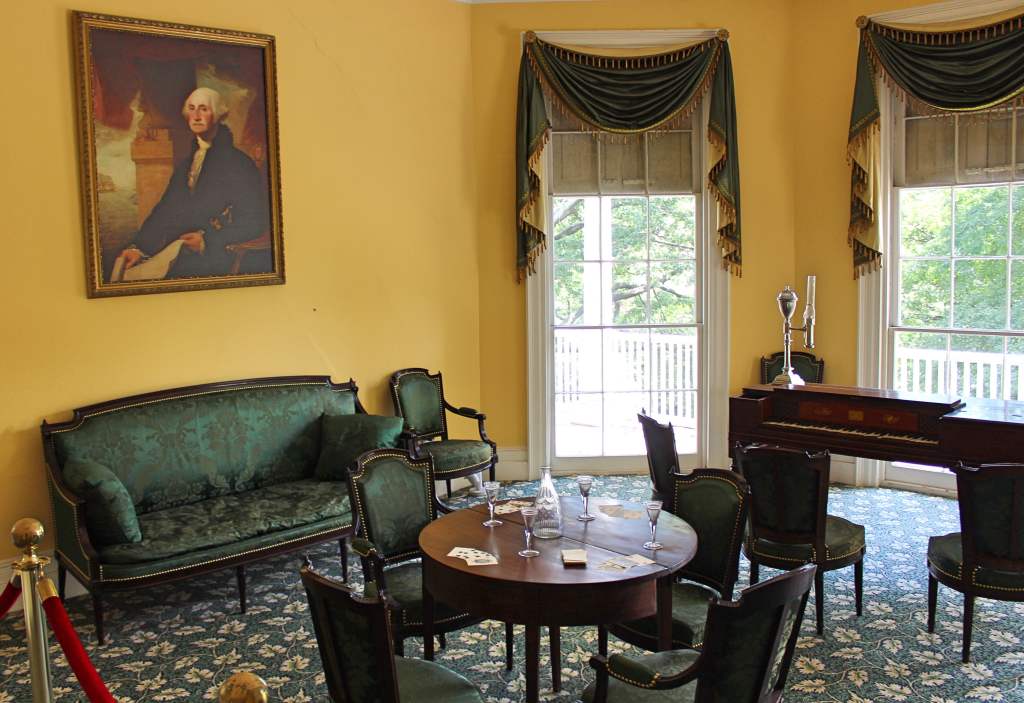
The house’s period rooms are all upstairs, on the first floor, accessible with a small wooden staircase from the basement. The hours of access are extremely limited (on weekdays from 12:00 to 1:00, and from 3:00 to 4:00), which makes visiting somewhat inconvenient. But it does not take much time to see everything. There are three main rooms to visit: the dining room, the salon, and Hamilton’s study (where he must have spent most of his time). The dining room features a long elegant table and is well lit with three tall windows. The salon is where I imagine the family spent much of their time, playing cards and receiving guests. Hamilton’s study is much as one would expect: decorated with maps and well-stocked with books. It must have been far messier and fuller when he was alive. He was an avid reader and inveterate scribbler.
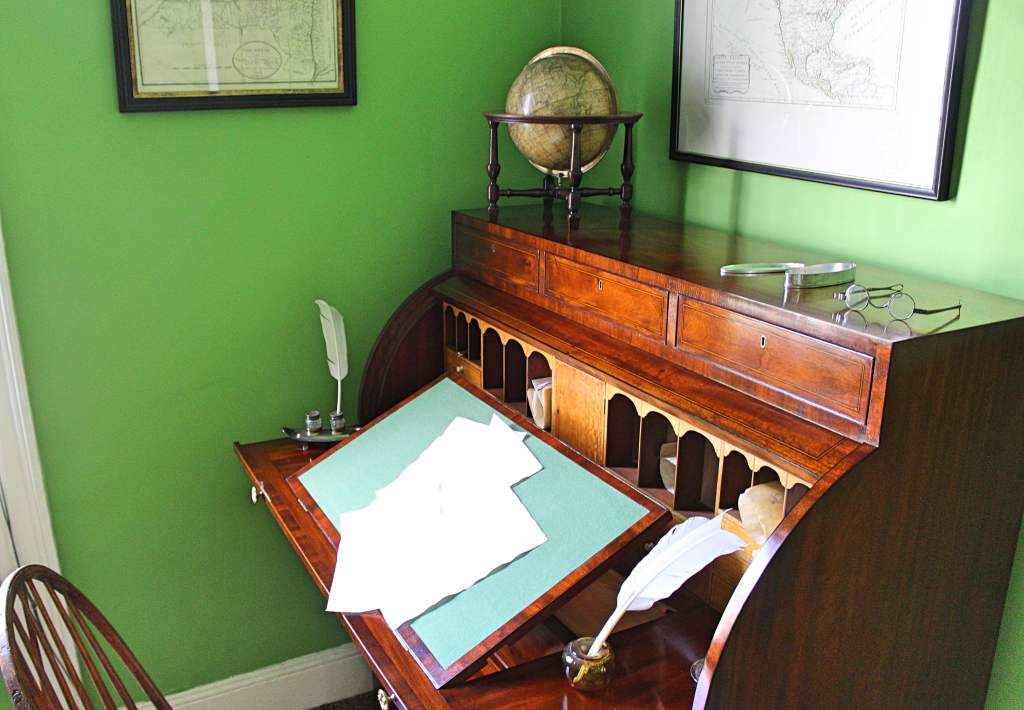
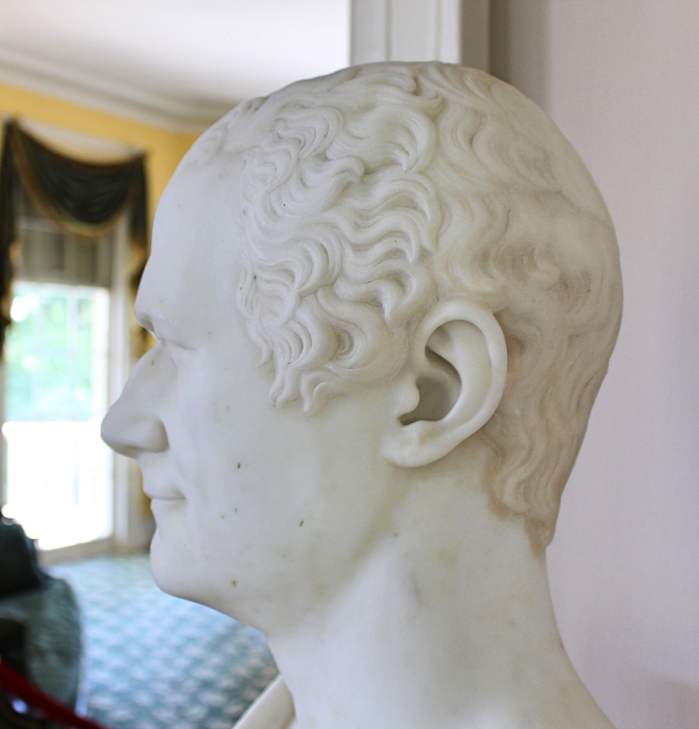
Two notable paintings hang on the walls, one a full-length portrait of Hamilton himself, looking like a sophisticated dandy. There is also a portrait of George Washington, given as a gift to the Hamiltons from the Washingtons (the two men worked very closely together). The two original paintings are now in the Metropolitan Museum of Art, where they hang proudly in the American Wing; the paintings here are reproductions. Even more captivating is a life-sized bust of Hamilton, dressed like a Roman statesman and looking quite like one too. According to the guide, Hamilton’s wife considered the bust extremely lifelike, and even spoke to it after his death. It is a wonderful piece, bringing him to life with a winsome and wise smile. (Thomas Jefferson, Hamilton’s great rival, had a replica of this bust in his house in Monticello, placed opposite to his own, so the two would be forever in opposition.)

And that is about all there is to see. If anything, the house is charming because it shows how humble may be the life of an extraordinary historical figure.
But I should not end this post without mentioning another monument next door. Up the hill from Hamilton’s Grange is one of the most attractive college campuses I have ever seen: the North Campus of CUNY’s City College. The entire complex is built in a flamboyant neo-gothic style, designed by the architect George Browne Post (many of whose other important works have been demolished). Everything follows a unified aesthetic, from the elaborate iron grillwork on the gates to the little lamps flanking the entrances. The stonework on the buildings is particularly delightful, with enough subtle variation in color and texture to remain endlessly pleasant to examine. Every detail is well-done, from the wry gargoyles scattered throughout to the ornamented roofs and towers.
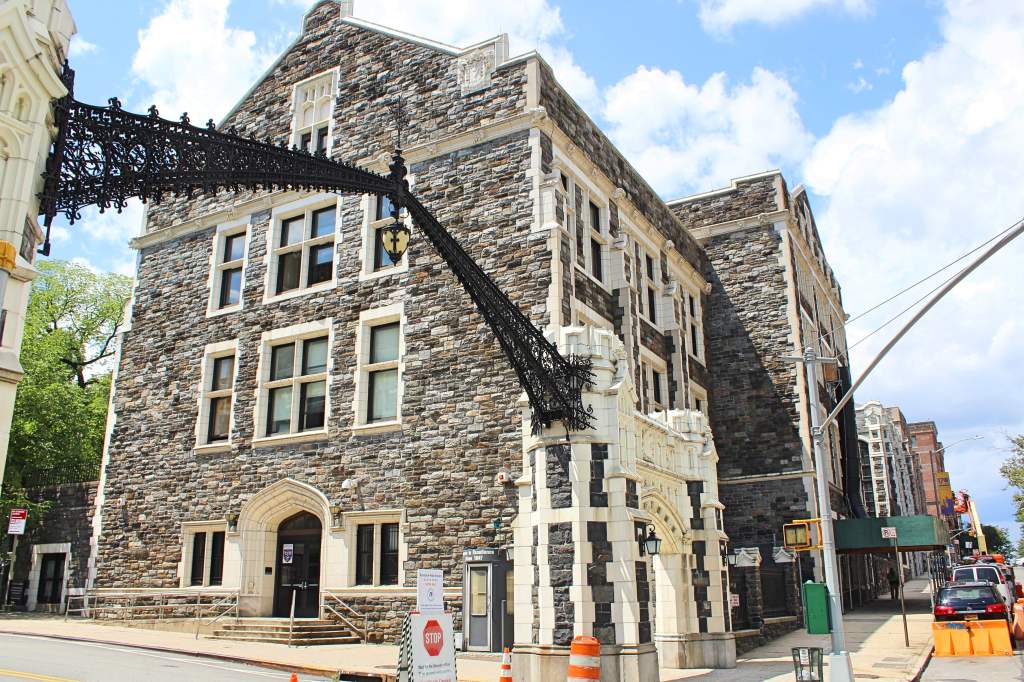
The centerpiece of the complex is Shepard Hall—named after a prominent NYC lawyer—which features a central building in the shape of a cathedral, and two curving wings on either side. Unfortunately I could not enter the building, as all the doors were locked. If I had gone inside, I would have seen the monumental Great Hall, a sort of central nave at the end of which is a mural by Edwin Blashfield, the artist who decorated the Library of Congress. In front of this hall is a statue of Alexander S. Webb, a general in the Civil War and the second president of the university. The statue makes him out to look like quite a swaggering military figure, and not exactly a bookish man.


(On the subject of statues, I ought, too, to mention the statue of Alexander Hamilton in front of the Broadway Spanish Baptist Church nearby. Here he looks rather like he does in the aforementioned painting, a heroic dandy.)
To me, the campus is a delightful and inspiring place. Indeed, the only American university campus of comparable beauty I know of is the University of Virginia, designed by Thomas Jefferson. Having gone to a rather unattractive university myself, I am very sensitive to the effect that architecture can have on the mood and atmosphere of an institute of higher learning. The strong verticality of the gothic buildings lifts one up and their historical form inspires a sense of participating in an honorable intellectual tradition.









